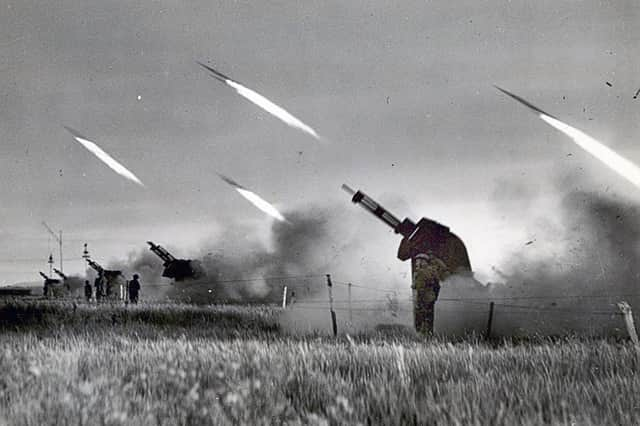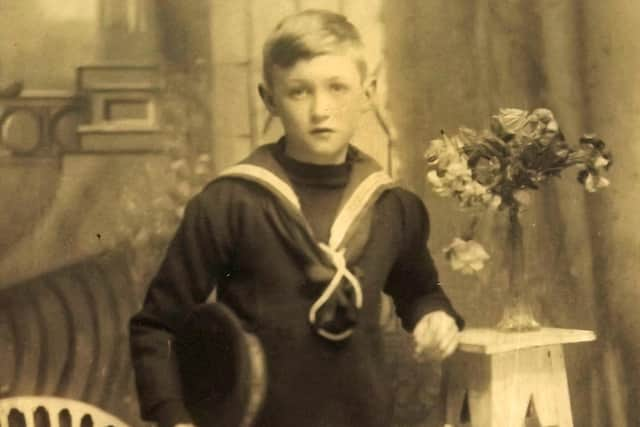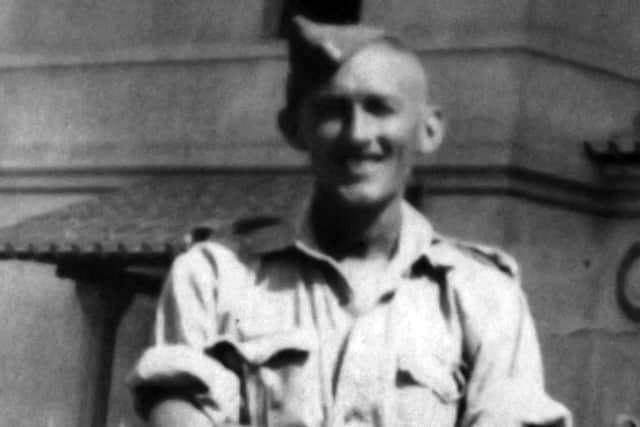Portsmouth lads with little future joined the forces to 'see' the world | Nostalgia


One of these was the late Ernest Charles Aspey, once of 142, Jervis Road, Stamshaw, Portsmouth I talked to Ernest’s son, Snowy Aspey at his home in Fareham about his father.
Ernest was born in October 1915 and when he was nine he joined HMS Excellent Volunteer Cadet Corps. On leaving school he worked for W Pink & Sons, the well-known Portsmouth grocer.
Advertisement
Hide AdAdvertisement
Hide AdSnowy says: ‘My father told me about the time the German battleship Graf Spee arrived in the city for the 1937 Fleet Review.


‘Every sailor from the ship was issued with a camera. Of course, photography was not permitted in the dockyard but there was nothing to stop the sailors taking photographs and my father assumes the pictures were sent back to Germany.’
In 1936 Ernest joined the Territorial Army based at Tudor Crescent, Hilsea. In 1938 he was based in Perrone Road with the 57HAA Portsmouth’s Own.
After the Munich crisis of 1938 Ernest was called up. As a gunner he was deployed on Southsea common during the blitz and air raids on the city. His squad was responsible for bringing down the aircraft that bombed St Cuthbert’s Church, Copnor.
Advertisement
Hide AdAdvertisement
Hide AdAfter the blitz Ernest was sent to Windsor to protect Slough from air attacks and that is where he met his future wife, Maud.


The guns used by Ernest’s squad were 3.7 mobile artillery and 4.5 fixed.
By late1942 Ernest was in Egypt defending Alexandria, again with anti-aircraft artillery.
Snowy told me that the market places of the city were full of wide boys and his father told him of the time he and his squad were strolling about a market when a local tried to sell one of the group a watch. ‘Listen to the sound,’ the man insisted. The soldier put the watch to his ear and indeed could hear the tick tick of the watch but knew the trick. He opened the watch to find a tick beetle in the back. They rub their legs together making the sound of a watch. There was no sale that day.
Advertisement
Hide AdAdvertisement
Hide AdLater Ernest was at Tobruk, although at the rear of the action. He was later sent to Salerno where there was ferocious, bloody fighting.
It was at this time that Lady Nancy Astor made the insulting comment in the Commons that all soldiers who were elsewhere during the invasion of France were D-Day dodgers. This implied troops fighting in Italy were cowards who had avoided the ‘real’ war in France.
Naturally this angered soldiers serving in Italy. Apart from the fact they had no say in where they were posted, I don’t think there was anyone who was a coward who fought at Anzio, Salerno or in the and the Monte Cassino offensive.
After Salerno part of Ernest’s duties was to collect the dead from battle.
Advertisement
Hide AdAdvertisement
Hide AdHis son added: ‘He didn’t speak much about that time but he had to remove bodies from tanks. When a tank takes a direct hit it is called “brewing up” the result being the crew are burned to death. The awful job of collecting the remains for burial was what Ernest and his pals had to do.’
Ernest was also put to work detecting mines – using a bayonet to prod the sand to find the mines. ‘The Germans laid many mines in the orange and lemon groves and when our boys rushed in they trod on them causing many casualties.’
At the end of the war Ernest was sent to Austria where he transported displaced people to new homes.
Arriving home after years away he and his wife lived in Bridport Street. He worked in the dockyard, for Vosper’s and finally in the power station in Old Portsmouth. Ernest died in 1995 another unsung Portsmouth hero.
Portsea Island birds
Advertisement
Hide AdAdvertisement
Hide AdThere have been several letters in The News recently about birdlife on Portsea Island. Many birds native to England are on the decline but it was not always so. The following will be of interest to birdwatchers.
In 1931 EH White wrote the following about birds visiting Portsmouth.
‘Of the main fly-lines of birds in migration between Britain and Europe, Portsea Island stands in the path of the one that passes through the Continent. Consequently, during the days when the spring migration is at its height the island is alive with fluttering, tired birds.
‘In late March and April the golf links at Southsea and the glacis at Eastney are alive with flitting wheatears and later merry with small flocks of chiff-chaffs and willow-wrens. Later still come the warblers, stopping for a few days’ rest before making off over the hill to their usual nesting quarters.’
Somewhat different today…
A message from the editor, Mark Waldron. You can subscribe here for unlimited access to our online coverage, including Pompey, for 27p a day.
Comment Guidelines
National World encourages reader discussion on our stories. User feedback, insights and back-and-forth exchanges add a rich layer of context to reporting. Please review our Community Guidelines before commenting.